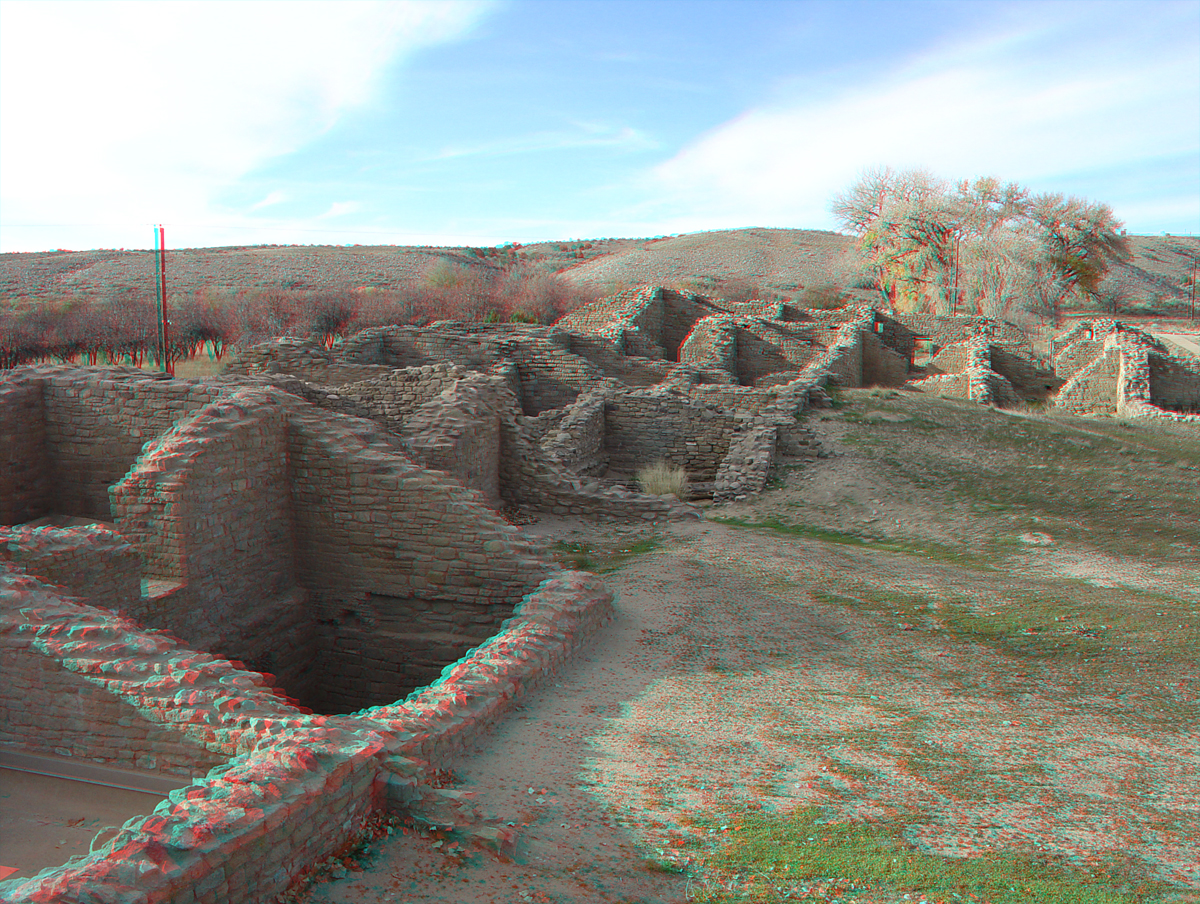
 |
| Although the name is Aztec Ruins National Monument, these ruins had nothing to do with the Aztecs of central Mexico. Early Euro-American settlers thought that the Ancient Puebloan communities had been Aztecs. However, archeologists in the late 19th Century settled the dispute by proving the Ancestral Puebloan cultures were much older than the Aztec culture of Mexico. The first Euro-American visitor to record information about the site was a geologist, Dr. John S. Newberry, in 1859. Looting of archeological materials has always been a problem in the Southwest. By 1878, anthropologist Lewis H. Morgan noted that about a quarter of the ruin's masonry had already be removed by area settlers to use as construction materials. Looting of the ruins was a serious problem until the site came under private ownership in 1889. In 1916 the ruin came under the protection of the American Museum of Natural History when systematic excavation, stabilization, and partial restoration began. The ruins were then declared a national monument in 1923. Much of the archeological investigations in the area were conducted in the 1930s, but much of the park's ruins were protected for future investigations. (Sources: Corbett, 1962; Lister and Lister, 1990). |